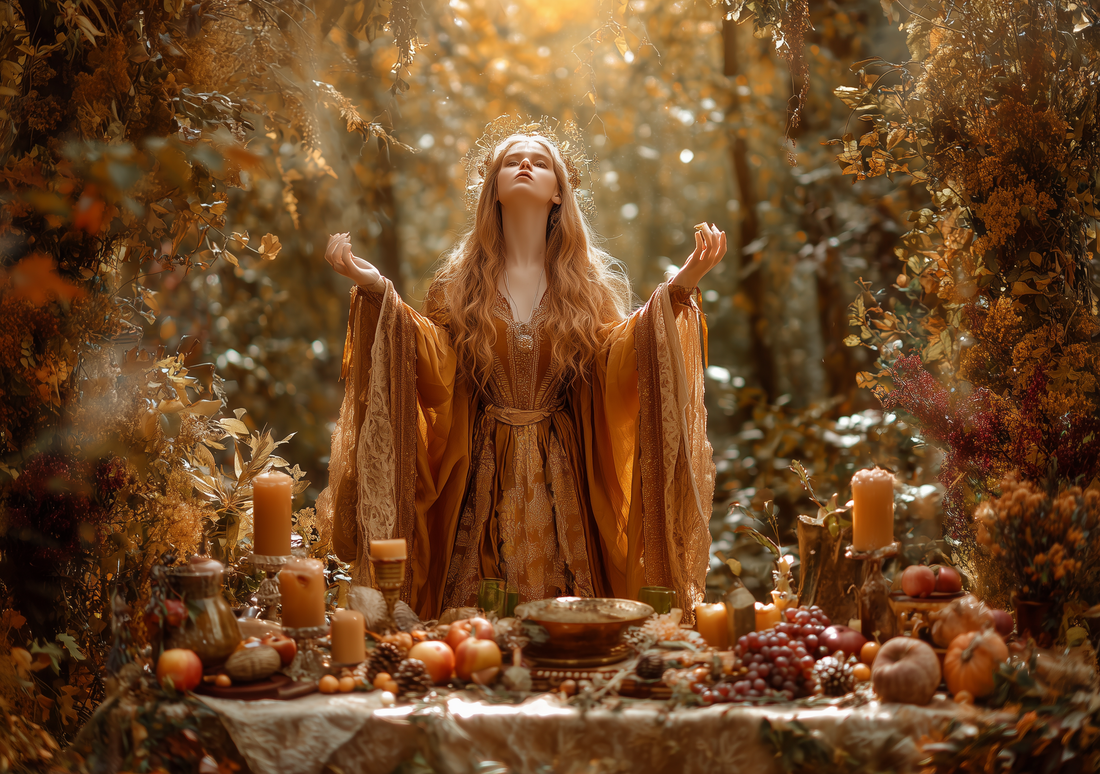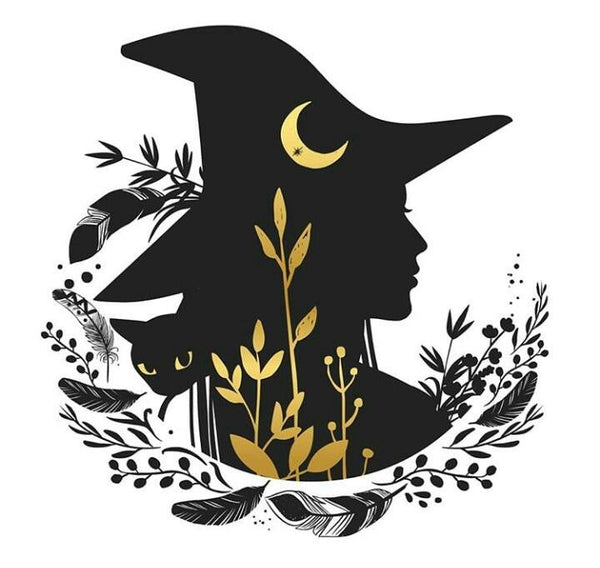
Mabon: What It Is and How to Celebrate It
Share
Mabon: What It Is and How to Celebrate It
//www.morganamagickshop.com/cdn/shop/articles/camomilablanca_A_serene_and_magical_autumn_equinox_scene_celebr_dd8a0e99-72dd-4bbb-9501-7b1801e17d56_1024x1024.png?v=1756283319
https://www.morganamagickshop.com/blogs/morganas-magical-blog/mabon-what-it-is-and-how-to-celebrate-it
The Wheel of the Year is filled with turning points, moments when nature pauses between cycles of growth, harvest, and rest. Among these sacred days is Mabon, the celebration of the Autumn Equinox. On this day, light and darkness stand in perfect balance, reminding us of the eternal dance between dualities—life and death, joy and sorrow, beginnings and endings.
Often referred to as the “Pagan Thanksgiving,” Mabon is a time to honor abundance, express gratitude, and prepare for the darker months ahead. It is both a celebration of what we have received and an invitation to release what no longer serves us.
The Origins and History of Mabon
Though the name Mabon is a modern one, coined in the 1970s by Aidan Kelly, the celebration of the autumn equinox is ancient. Cultures across the world have honored this liminal moment:
-
Celtic traditions: Equinox festivals marked the end of summer’s labor and the gathering of the second harvest. Apples, grains, and grapes were sacred symbols of the season.
-
Welsh mythology: The figure Mabon ap Modron, “the Great Son of the Great Mother,” represents youth, rebirth, and the mysteries of the Otherworld.
-
Greek mythology: The Eleusinian Mysteries, sacred rites of Demeter and Persephone, were celebrated at this time, honoring the descent into the underworld and the promise of return.
-
Roman festivals: Bacchus and Dionysus were honored with feasts of wine and revelry during the grape harvest.
-
Indigenous traditions worldwide: Equinox ceremonies honored the sacred balance between light and dark, often tied to agricultural cycles.
Modern Wiccans, witches, and pagans weave these threads together, celebrating Mabon as part of the Wheel of the Year—a living cycle of connection between humans, the Earth, and the divine.
The Symbolism of Mabon
Mabon is a festival of paradox and transition. It embodies both the joy of abundance and the bittersweet awareness that the sun’s light is waning. Its key symbols include:
-
Balance: Day and night are equal, reflecting harmony and the need to integrate both shadow and light within ourselves.
-
Harvest: Mabon is the “second harvest” of the year, when fruits, nuts, and vegetables are gathered. It symbolizes the rewards of our labor.
-
Sacrifice & Release: Just as the fields are cleared and the trees shed their leaves, we too are invited to let go of burdens and prepare for the inward journey of winter.
-
Gratitude: Mabon teaches us to pause, give thanks for the blessings we’ve received, and share our abundance with others.
Magical Correspondences of Mabon
-
Colors: Gold, russet, brown, crimson, forest green—tones of the harvest and falling leaves.
-
Crystals: Amber (warmth, solar energy), Carnelian (vitality), Citrine (abundance), Smoky Quartz (grounding), Amethyst (balance).
-
Herbs & Plants: Sage, rosemary, thyme, marigold, oak leaves, apple, grapevine, corn husks.
-
Foods: Apples, pomegranates, pumpkins, bread, wine, root vegetables, nuts.
-
Symbols: Cornucopia, acorns, pinecones, seeds, grapes, baskets of fruit.
-
Deities: Demeter and Persephone (Greek), Dionysus/Bacchus (wine, ecstasy), Mabon ap Modron (Celtic youth), The Green Man, Modron (the Great Mother).
-
Elemental Energy: Earth (abundance, grounding) and Water (intuition, reflection).
✨ Ways to Celebrate Mabon
1. Build a Seasonal Altar
Decorate your altar with apples, acorns, pinecones, pumpkins, and autumn leaves. Add candles in gold, orange, and red. Place a cornucopia or basket of fruit as a symbol of gratitude and abundance.
2. Gratitude Ritual
Write down a list of blessings you’ve received since the last equinox. Light a candle and read them aloud, offering thanks to the Earth, the gods, or the universe. Burn the list (safely) as a symbol of sending your gratitude back into the world.
3. Feast of the Harvest
Prepare a meal with seasonal foods: baked bread, roasted vegetables, apple cider, nuts, and wine. Share with loved ones and honor the spirit of community. Dedicate a portion of the meal to ancestors or leave an offering outdoors.
4. Release and Renewal
Write down habits, emotions, or patterns you wish to release. Burn or bury the paper, visualizing yourself lighter and freer. Just as the trees shed their leaves, this ritual helps clear space for new growth.
5. Nature Walk and Offerings
Take a walk in a park or forest. Collect fallen leaves, acorns, or stones for your altar. Offer an apple or bread back to the land as a gesture of reciprocity and balance.
6. Divination for Balance
Use tarot or runes to ask: Where am I out of balance in my life? What do I need to let go of? The equinox is the perfect moment to seek clarity and guidance.
🌙 Final Reflections
Mabon is more than a seasonal festival—it is an invitation to live in harmony with the cycles of nature. It teaches us to celebrate abundance while preparing for rest, to hold joy and release in equal measure, and to honor both the light and the shadow.
As you celebrate Mabon, may your altar glow with golden candles, your table overflow with fruits of the harvest, and your heart be filled with gratitude. And as the wheel turns toward the dark half of the year, may you walk with balance, wisdom, and peace.
“As the light wanes, I honor the harvest. As the dark grows, I honor the mystery. I walk in balance, between shadow and flame.”
✨ Want to expand your Grimoire or Book of Shadows with beautiful pages about Mabon, the Autumn Equinox?✨
At Morgana Magick Shop you’ll find stunning, printable grimoire pages filled with symbolism, rituals, and magical correspondences of this sacred festival. Perfect for witches, Wiccans, and lovers of the Wheel of the Year, these pages will enrich your practice and bring beauty to your BOS.
👉 Download them now and make your Book of Shadows truly enchanting!

